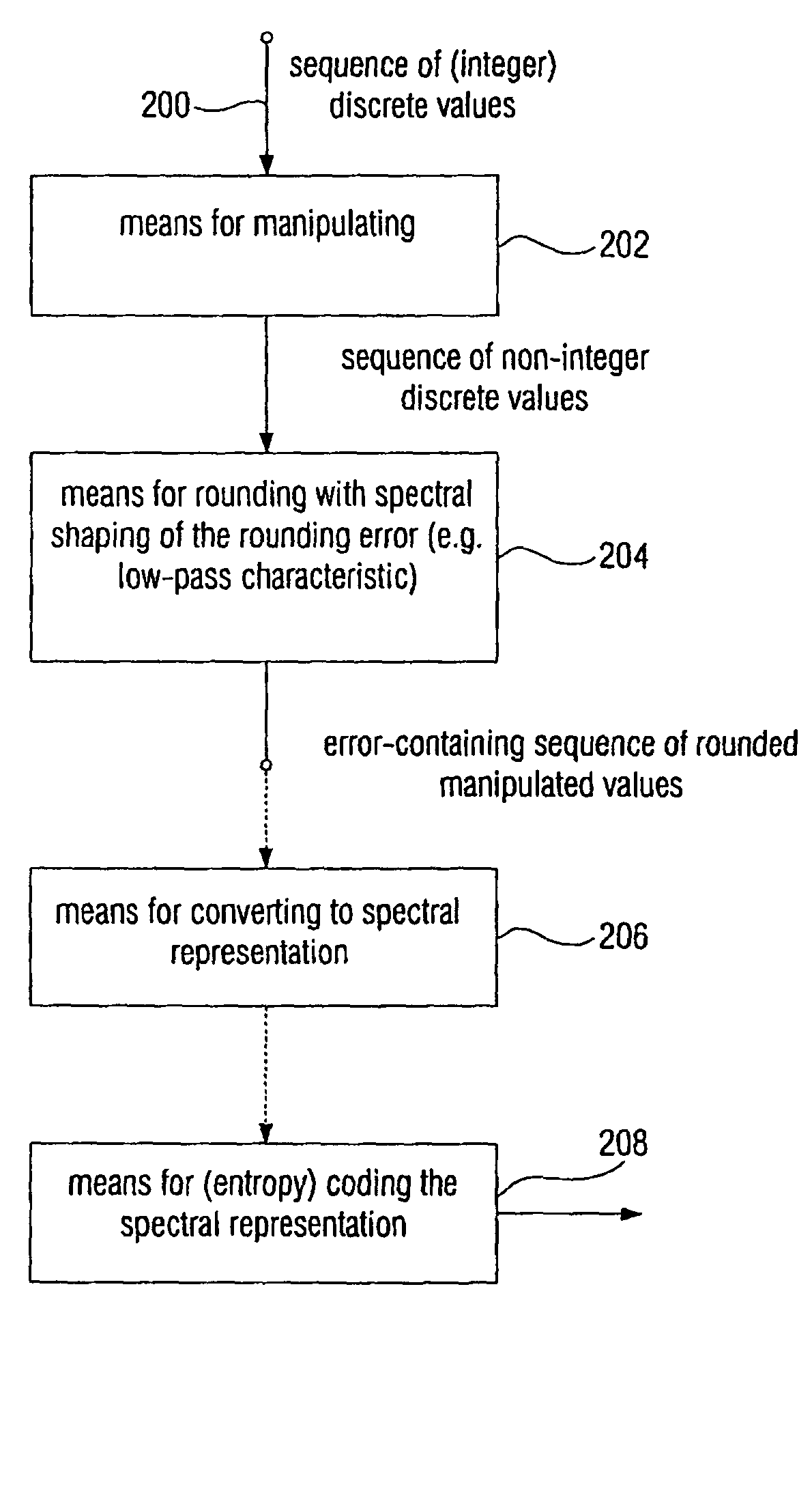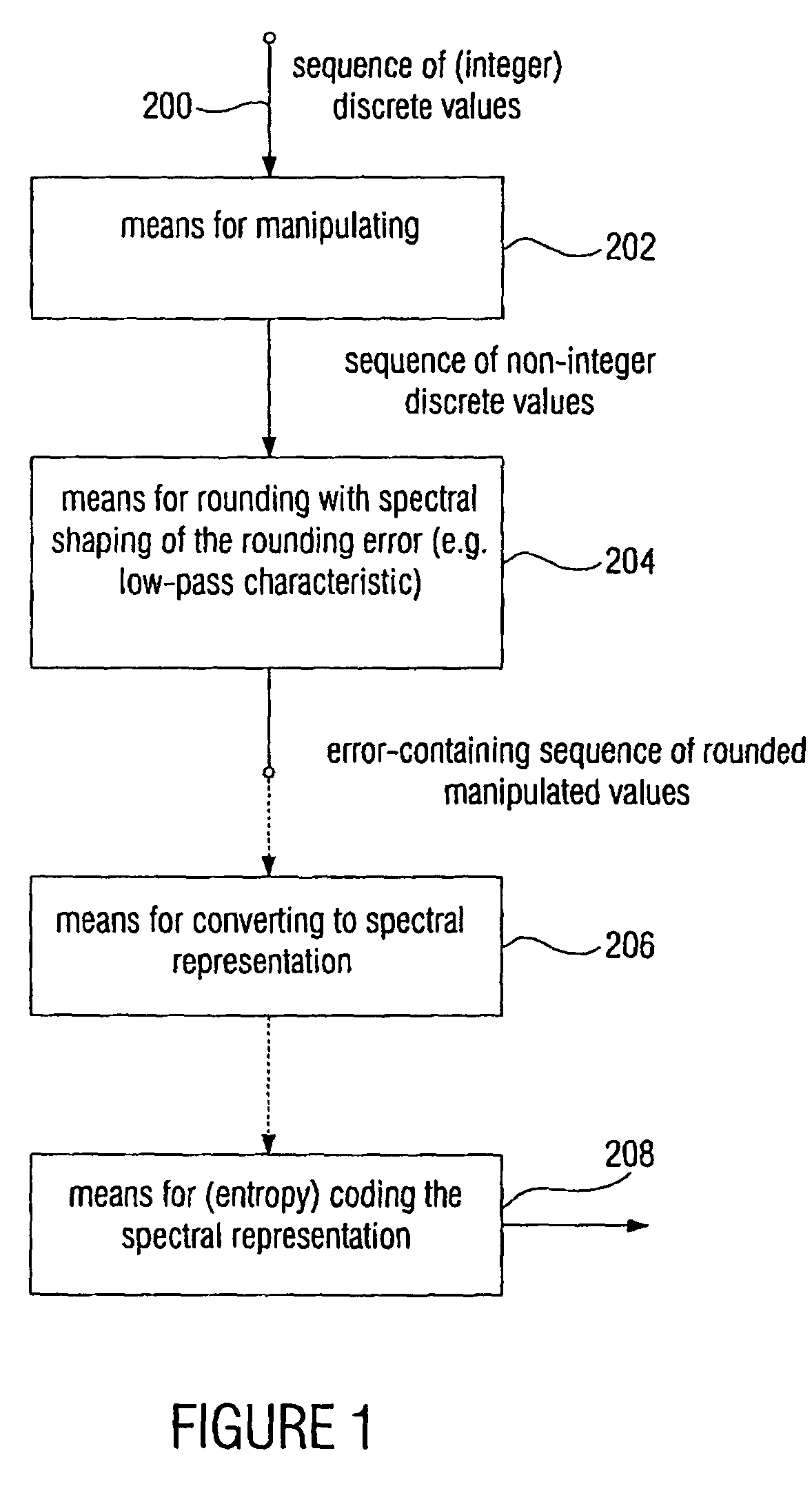Device and method for processing a signal having a sequence of discrete values
a signal and discrete value technology, applied in the field of signal processing, can solve the problems of increasing increasing the decoding performance, and increasing the number of steps, so as to achieve the effect of reducing the overall data rate of the signal, accelerating the signal processing, and improving the decoding performan
- Summary
- Abstract
- Description
- Claims
- Application Information
AI Technical Summary
Benefits of technology
Problems solved by technology
Method used
Image
Examples
Embodiment Construction
[0103]FIG. 1 shows a device for processing a signal having a sequence of discrete values which is input to means 202 for manipulating via a signal input 200. The signal is typically formed to have a first frequency range in which the signal has a high energy and to have a second frequency range in which the signal has a comparatively low energy. If the first signal is an audio signal, it will have the high energy in the first frequency range, i.e. in the low frequency range, and will have the low energy in the high frequency range. If, however, the signal is a video signal, it will also have the high energy in the low range, and will have the low energy in the high range. In contrast to the audio signal, the frequency range in the video signal is a spatial frequency range, unless successive video frames are considered in which there also exists a temporal frequency, for example related to a selected image area, in successive frames.
[0104]The means 202 for manipulating is generally f...
PUM
 Login to View More
Login to View More Abstract
Description
Claims
Application Information
 Login to View More
Login to View More - R&D
- Intellectual Property
- Life Sciences
- Materials
- Tech Scout
- Unparalleled Data Quality
- Higher Quality Content
- 60% Fewer Hallucinations
Browse by: Latest US Patents, China's latest patents, Technical Efficacy Thesaurus, Application Domain, Technology Topic, Popular Technical Reports.
© 2025 PatSnap. All rights reserved.Legal|Privacy policy|Modern Slavery Act Transparency Statement|Sitemap|About US| Contact US: help@patsnap.com



